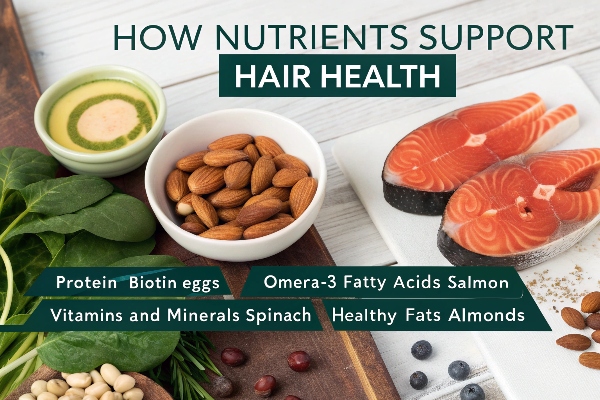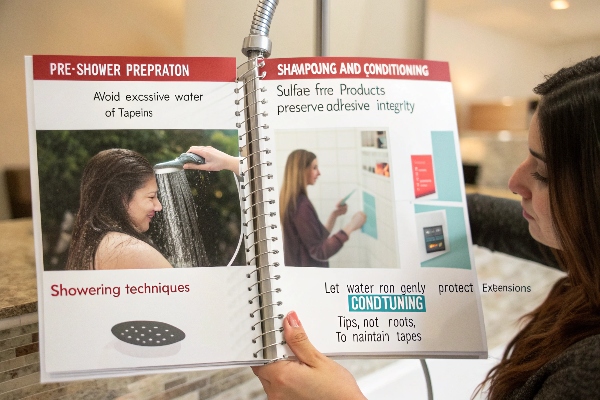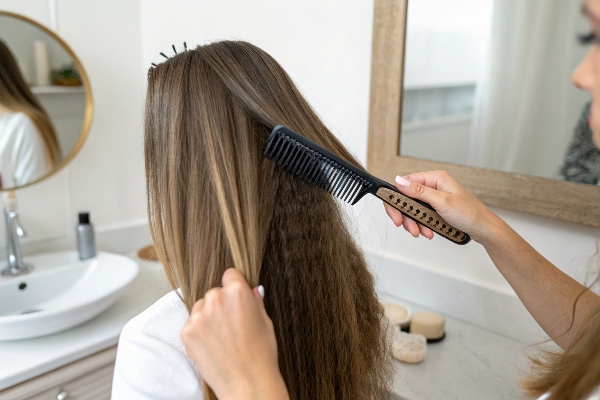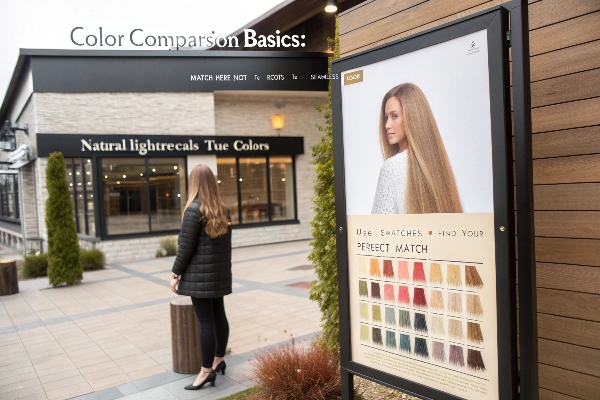If you are struggling with thin hair, you’re not alone—many women experience hair loss after the age of 40, and some even face this issue at a younger age. Due to a combination of factors such as genetics, hormonal changes, lifestyle stress, dietary habits, and hair care routines, approximately 40% of women encounter this challenge.
But don’t worry; hair extensions can be a fantastic solution! They can easily add length and volume, whether you visit a salon or choose to apply them yourself. This allows you to experiment with different hairstyles while gradually nourishing and caring for your natural hair.
This comprehensive guide will provide everything you need to know about selecting the best hair extensions for thin hair. We’ll cover the most common causes of thinning, the safest application methods, and which extensions to avoid to ensure you achieve beautiful, healthy results. Embrace your journey to fuller hair and unlock a world of styling possibilities!
Will Hair Extensions Really Help with My Thin Hair?

Absolutely, hair extensions can be a fantastic solution for women dealing with thin hair! Many may have concerns about whether extensions will cause damage, but with the right type of extensions and proper installation, you don’t have to worry at all.
When applied correctly, high-quality hair extensions can enhance your hairstyle without harming your natural hair. The added volume and length can create the appearance of fuller hair, allowing you to experiment with new styles and boost your confidence.
Moreover, by using extensions, you can temporarily protect your natural hair1, minimizing the need for heat styling or harsh treatments that often lead to damage. This can give your natural hair a chance to recover and become healthier over time.
What Causes Hair Loss Leading to Thinning Hair?

Hair loss and thinning can stem from a variety of factors that affect individuals differently.
- Hereditary Factors: A family history of hair loss, particularly androgenetic alopecia2 (commonly known as male or female pattern baldness), significantly increases the risk of thinning hair.
- Hormonal Changes: Events such as pregnancy, childbirth, menopause, and thyroid issues can cause fluctuations in body hormones, disrupting the hair growth cycle and leading to shedding.
- Nutritional Deficiencies: Lack of essential nutrients like iron, zinc, vitamin D, and protein can weaken hair follicles, causing hair to thin or fall out.
- Psychological and Physical Stress: Life-altering events, chronic illnesses, or mental health challenges can trigger a condition called telogen effluvium3, where hair follicles prematurely enter the shedding phase.
- Scalp Conditions: Infections, dandruff, and skin disorders can interfere with hair growth. Poor hair care practices, including excessive chemical treatments, tight hairstyles, and heat exposure, can also result in damage and thinning.
- Medical Conditions and Medications: These may lead to hair loss as side effects.
- Environmental Factors: Pollution, UV exposure, and extreme climates can negatively affect hair health. Understanding these causes can empower individuals to take preventative measures to maintain healthy, fuller hair.
Choose the Right Hair Extension Principle for Thin Hair

- Lightweight Extensions: Opt for lightweight hair extensions that use a minimal amount of weight in the connection parts. This helps reduce the strain on your natural hair, allowing for a more comfortable wear while minimizing the risk of damage.
- Shorter Length: It’s advisable to choose extensions in the range of 14 to 18 inches. Longer extensions tend to weigh more, which can place additional stress on the hair roots, leading to breakage or thinning. Shorter lengths achieve a natural look without compromising hair health.
- High-Quality Materials: Invest in high-quality hair extensions made from premium materials. These not only look more natural but are also kinder to your hair. Remy hair extensions, for instance, are known for their smoothness and durability, making them an excellent choice for those with thin hair.
- Ease of Application and Removal: Look for extensions that are easy to apply and remove. Clip-in or tape-in extensions are often preferred for their user-friendly application, which allows you to add volume or length whenever you desire. This flexibility is especially important for maintaining the health of your natural hair.
- Wide Attachment Area: Choose extensions with a wider attachment area, as they help distribute the weight more evenly across a larger section of your hair. Tape-in extensions excel in this regard; their adhesive strips attach to broader sections compared to other methods, such as keratin bonds or micro rings. This reduces tension on individual strands and promotes healthier hair over time.
What Are the Best Hair Extensions for Thin Hair?
When it comes to enhancing thin hair, the best options are undoubtedly tape-in and clip-in hair extensions. Both of these methods offer unique benefits that align well with the needs of those with finer hair.
Tape-In Hair Extensions for Thin Hair
Tape-in hair extensions are designed to resemble a "hamburger," where two pieces of tape are applied with a section of your natural hair sandwiched in between. This technique creates a flat and seamless look, ensuring there are no bumps or lumps visible in your hairstyle.
Why They’re Great for Thin Hair:
- Lightweight: Tape-in extensions are incredibly lightweight, which means they won’t pull on your natural hair or scalp, reducing the risk of damage.
- Wide Attachment Area: The wider attachment area helps distribute the weight evenly, minimizing tension on your natural hair follicles.
- Easy Application and Removal: These extensions can be easily applied and taken off without the need for special tools or professional assistance, making them convenient for daily use.
- Reusable: Tape-in extensions can be reused multiple times, making them a cost-effective solution for adding length and volume.
Clip-In Hair Extensions for Thin Hair
Clip-in hair extensions are considered one of the easiest ways to instantly add length and volume to your hair. They allow for quick transformation without the commitment of permanent methods, and you can easily do it yourself at home, saving time and money that would otherwise be spent at a salon.
Why They Are Suitable for Thin Hair:
- Simple Application: Clip-ins can be applied in just a few minutes, allowing you to achieve your desired look without any hassle.
- Mini Clip-In Options: For those with particularly thin hair, mini clip-in extensions are available. These smaller pieces blend seamlessly and offer a more natural look.
- Seamless Design: Many clip-in extensions feature a seamless design, which helps them blend effortlessly with your own hair for a natural finish.
- Wide Attachment Area: Like tape-ins, clip-in extensions often come with a wider base, distributing weight evenly and reducing tension on your strands.
- Reusable: They are also reusable, which adds to their value and makes them a fantastic long-term investment.
How to Take Care of Hair Extensions for Thin Hair?

Taking care of hair extensions, especially for those with thin hair, is essential to maintain their appearance and prolong their lifespan. Here are some effective tips to ensure your hair extensions stay in great shape while protecting your natural hair:
Gentle Washing
- Use a Sulfate-Free Shampoo4: Opt for a gentle, sulfate-free shampoo designed for extensions. Sulfates can strip natural oils and weaken the hair fibers.
- Lukewarm Water: Always wash your extensions in lukewarm water. Hot water can cause the hair to dry out and become brittle.
- Avoid Over-Washing: Wash your extensions only when needed to avoid excessive tangling and drying. Depending on your usage, every 7 to 10 wears is often sufficient.
Conditioning
- Deep Conditioning: Use a hydrating conditioner or a deep-conditioning mask to keep your extensions moisturized. Focus on the mid-lengths and ends, as these areas tend to be drier.
- Leave-In Conditioner: Applying a leave-in conditioner can help maintain moisture and reduce frizz, particularly for longer extensions.
Detangling
- Use a Wide-Tooth Comb: When detangling, start at the ends and work your way up to minimize breakage. Avoid using fine-tooth combs or brushes that can pull and damage the hair.
- Use a Spray Detangler: Consider a spray detangler specifically formulated for hair extensions to make the process smoother and reduce the risk of tangling.
Heat Protection
- Avoid Excessive Heat: Minimize the use of heat styling tools, as they can damage both your natural hair and the extensions. When you do use heat, make sure to apply a heat protectant spray to shield the hair.
- Low Heat Settings: If you must use hot tools, keep them at low or medium heat settings to reduce potential damage.
Storage
- Proper Storage: When you’re not wearing your extensions, store them in a cool, dry place. Consider braiding them or placing them in a soft pouch to prevent tangling.
- Avoid Hanging: Do not hang your extensions as this can lead to deformation and tangling.
Regular Maintenance
- Schedule Regular Appointments: If you have tape-in extensions, make sure to schedule regular maintenance appointments to reposition them as your natural hair grows.
- Inspect for Damage: Regularly check your extensions for signs of wear and tear, including split ends and tangling. Address these issues early to prevent worsening conditions.
Be Mindful of Activities
- Swim with Care: If you go swimming, especially in chlorinated pools or saltwater, wear a swim cap to protect your extensions. Rinse your hair afterward and apply a leave-in conditioner to help preserve moisture.
- Tie Up When Sleeping: Protect your extensions while you sleep by loosely tying them up in a braid or bun to avoid tangling.
In conclusion, both tape-in and clip-in hair extensions are excellent choices for those with thin hair. Each option provides a variety of benefits, allowing you to achieve beautiful, voluminous hair while maintaining the health of your natural locks. Choose the method that best suits your lifestyle and enjoy the transformation!
Discover effective methods to protect your natural hair when using extensions, ensuring healthy growth and recovery. ↩
Understanding androgenetic alopecia can help you identify and address hereditary hair loss effectively. ↩
Learning about telogen effluvium can provide insights into stress-related hair loss and potential remedies. ↩
Explore the advantages of sulfate-free shampoos to keep your hair extensions healthy and vibrant. ↩









